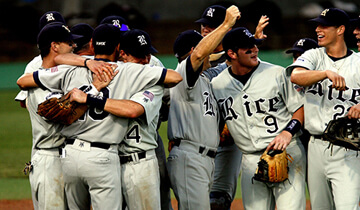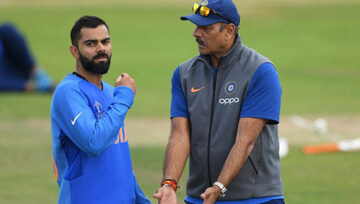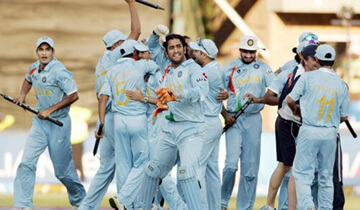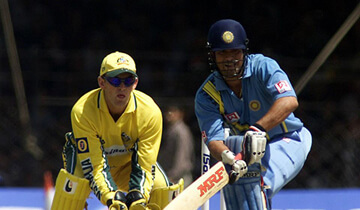Cricket is a popular bat-and-ball sport with a rich history dating back to the 16th century. It originated in England and later spread to British colonies. Today, cricket is most popular in Commonwealth countries but efforts are being made to globalize the sport beyond this core base. Cricket is governed internationally by the International Cricket Council (ICC), which has over 100 member nations.
History and Origins
The origins of cricket are somewhat unclear but it is believed to have developed out of bowls and other bat-and-ball games in the south-east of England in the 16th century. The first recorded cricket match took place in Kent in 1646 and by the late 1600s, cricket had developed into a major sport in England.
The growth of the British Empire helped spread cricket to areas such as the Indian subcontinent, Australia, South Africa and the West Indies in the 18th and 19th centuries. Cricket quickly gained popularity in these regions. International matches were first played in the 19th century when English touring teams traveled overseas.
Rules and Gameplay
Cricket is played between two teams of eleven players on an oval-shaped grass field. In the center is a 22-yard long pitch with wickets at either end. A batsman scores runs by hitting the ball and running between the wickets. The bowler aims to dismiss the batsman in various ways. Innings end when ten batsmen are dismissed.
Test matches, the oldest and most prestigious format, can last up to five days. Shorter formats called One Day Internationals and Twenty20 prioritize big hitting and high scoring. Rules vary somewhat between formats.
Umpires officiate matches and oversee the rules. Technology like instant replay now assists umpires. The unique attributes of cricket have created a rich terminology and culture. Fans closely follow statistics of teams and players.
Global Reach and Governance
The International Cricket Council (ICC) serves as the global governing body having over 100 member nations. It organizes international tournaments and creates standard rules. The ICC’s 12 Full Members are eligible to play Test matches. In 2019, the ICC granted Full Member status to Ireland and Afghanistan, expanding cricket’s global reach.
The ICC hopes cricket will be included at future Olympic Games to boost its popularity. T20 cricket debuted at the Commonwealth Games in 1998. Cricket has struggled to gain traction in several regions like East Asia, continental Europe and the Americas. But the ICC’s development programs aim to tap these new markets and associated commercial opportunities.
From humble origins in England, cricket has evolved into a mass spectator sport and global business under the auspices of the ICC. Traditional cricket nations now coexist alongside emerging teams. With growing professionalization and commercialization, cricket aims to broaden its footprint for the 21st century even as it safeguards the traditions that fans cherish. Striking this balance will shape cricket’s continued international growth.
In the world of cricket, you may have come across the abbreviation “ICC” quite often. But what does ICC stand for in cricket? ICC stands for the International Cricket Council.
History and Origins of Cricket
Origins in England
Cricket originated in southeast England sometime before 1550. The earliest definite reference to the sport comes from 1598, when a court case referred to a sport called “creckett” being played at the Royal Grammar School in Guildford, Surrey.
While the exact origins are unclear, cricket likely evolved from other bat-and-ball games played in England at the time, including stoolball. Stoolball involved hitting a ball with a bat or staff and running between two stools or bases. Cricket bears similarities to stoolball but also has some key differences, like using wickets instead of stools.
In the early 17th century, cricket established itself as a popular sport in London and southeast England. The first official rules of cricket were written in 1744. They stated that the ball should weigh between 5-6 ounces and the bat no more than 4 inches wide.
Cricket Spreads Through the British Empire
As the British Empire expanded in the 18th and 19th centuries, cricket spread to different parts of the world. British soldiers, merchants, and missionaries brought the sport with them wherever they went.
The first international cricket match took place in 1844 between the United States and Canada in New York. Soon after, England teams began touring overseas to play matches against European countries, Australia, and the colonies.
Cricket quickly gained popularity in countries like Australia, South Africa, India, and the West Indies. Local clubs and associations were formed to govern the sport.
The Ashes: Oldest Cricket Rivalry
The oldest and most famous cricket rivalry began in 1882 when England lost at home to Australia for the first time. After the defeat, a mock obituary of English cricket was published stating that “the body will be cremated and the ashes taken to Australia.” The following season, England captain Ivo Bligh vowed to “regain the ashes” during the tour to Australia.
After England won the 1882-83 series, Bligh was presented with a small urn containing ashes as a joke. The urn became the symbolic trophy presented to the winner of cricket matches between England and Australia thereafter.
The Ashes has grown into one of the fiercest and most followed rivalries in cricket. Series are played biennially either in Australia or England. Australia has historically had an edge, winning more series overall than England. The Ashes continues to captivate cricket fans around the world today.
International Growth in the 20th Century
Cricket continued to expand globally and gain popularity during the 20th century. Test matches, the longest format of the game, began to be played between different countries.
The Imperial Cricket Conference was formed in 1909 to govern international cricket, later renamed the International Cricket Council (ICC). South Africa, India, West Indies, New Zealand and Pakistan joined England and Australia to become the first test-playing nations.
One-day cricket also emerged mid-century as a shorter form of the game to appeal to spectators. The first Cricket World Cup was held in 1975 across England.
The ICC expanded in the late 20th century to include more member nations. Cricket is now one of the most popular sports worldwide with hundreds of millions of fans. While the legacy nations still dominate, countries like Sri Lanka, Bangladesh and Afghanistan all field strong international teams today.
Governing Bodies
The Marylebone Cricket Club
The Marylebone Cricket Club (MCC) has been the custodian of cricket’s laws since the 18th century. Based at Lord’s Cricket Ground in London, the MCC was founded in 1787 and soon became the game’s sole rule-making body. Cricket’s growth in the 18th and 19th centuries was closely tied to the British Empire, and the MCC - with its home at the ‘HQ of cricket’ Lord’s - was seen as the central authority on laws and rules. While the governance of cricket has moved beyond the MCC today, it still remains an important custodian of cricket’s spirit and laws. Any changes to the laws of cricket must be approved by the MCC before coming into effect.
The International Cricket Conference
The Imperial Cricket Conference was formed in 1909 by representatives from England, Australia and South Africa - the foremost cricket nations at the time. The purpose was to oversee international cricket relations and ensure uniformity in rules across countries. As more countries like West Indies, New Zealand and India took up cricket over the first half of the 20th century, they were inducted as members. The organization was renamed as the International Cricket Conference in 1965 and then the International Cricket Council. Today, the ICC remains the global governing body for international cricket.
The International Cricket Council
Headquartered in Dubai, the International Cricket Council (ICC) is the global governing body for international cricket today with over 100 members. The ICC has 12 Full Members that play official Test matches, and over 90 Associate Members. The key roles of the ICC include:
- Organizing major international cricket tournaments like the World Test Championship, the One Day International World Cup, the T20 World Cup and the Champions Trophy.
- Overseeing the international cricket calendar.
- Ranking teams and players for different formats of the game.
- Promoting the global growth and popularity of cricket.
- Preventing corruption in cricket and taking disciplinary action where needed.
- Enforcing the standardized rules and regulations of cricket.
Any changes made to the laws of cricket must be approved by the MCC and then adopted by the ICC’s executive board before they come into effect internationally. The ICC thus ensures uniformity in rules across all its Member nations.
Cricket Administration in Member Nations
While the ICC manages cricket globally, responsibility for cricket activities in each country lies with that country’s cricket board. For example:
- The Board of Control for Cricket in India (BCCI) looks after cricket activities in India. It is the richest cricket board in the world.
- Cricket Australia administers cricket in Australia at all levels. CA is also one of the biggest cricket boards globally.
- The England and Wales Cricket Board (ECB) is the governing body in England and Wales. Apart from national teams, it also manages county cricket.
- Cricket South Africa is the governing body in South Africa.
- Similarly, other test playing nations like Pakistan, West Indies, Bangladesh, Sri Lanka, New Zealand and Zimbabwe have their own national cricket boards.
These boards are autonomous in managing cricket within their countries while adhering to the overall framework set by the ICC. They look after domestic tournaments and infrastructure in their country while also selecting national squads that participate in international ICC tournaments.
Domestic Cricket Structures
There are several domestic cricket structures managed by national boards today:
First Class Cricket
First class cricket matches are the highest level domestic games in each country, played over multiple days between regional or city teams. Examples:
- The County Championship in England has 18 county teams.
- The Sheffield Shield in Australia involving state teams.
- The Ranji Trophy with 38 teams from Indian states and cities.
- The Currie Cup in South Africa among province teams.
List A Cricket
List A cricket includes domestic one-day matches played over a single day. Earlier known as limited overs matches:
- Natwest 50 over cup in England
- Vijay Hazare Trophy in India
- Deodhar Trophy in India
Twenty20 Cricket
The newest format of limited overs cricket over 20 overs per side. Fast paced games completed in 3 hours. Very popular with audiences. Major leagues include:
- Indian Premier League (IPL) - most popular T20 league
- Big Bash League in Australia
- T20 Blast in England
- Caribbean Premier League in West Indies
- Pakistan Super League in Pakistan
Domestic cricket leagues help develop talent which feeds into the national teams. They also provide regular cricket action for fans within each country between international tournaments.
Women’s Cricket
For a long time, cricket was primarily a men’s sport. However, women’s cricket has rapidly gained popularity and reach over the last 30 years. All major cricket playing nations now have active women’s cricket teams that take part in international events. Some key elements:
- The first Women’s World Cup was held in 1973. The tournament is now held every 4 years.
- The ICC Women’s Championship was initiated to provide more fixtures between top 8 teams.
- In 2018, the ICC awarded central contracts to women players for the first time.
- The Women’s Big Bash League in Australia draws sizeable crowds and TV audience.
- England’s Kia Super League is another successful professional league for women.
Women’s cricket thus has an established international and domestic structure today that nurtures talent. Stars like Mithali Raj, Meg Lanning, Harmanpreet Kaur and Ellyse Perry are household names that inspire young girls globally. With continued investment and support, the women’s game will achieve new heights in the years ahead.
Cricket’s governance from the historical origins of the MCC to today’s ICC reflects how the sport has spread from being an English colonial pastime to becoming a global game played seriously across several continents. While retaining its traditional elements that give it a unique character, cricket continues to evolve and expand under the stewardship of custodians like the MCC and ICC. This balance of tradition and transformation has enabled cricket to thrive and grow for over 300 years.
Formats of the Game
Test matches
Test matches are the longest format of cricket, played between international teams over 5 days. Each team bats twice, with unlimited overs in an innings. A test match can end in a draw if no result is achieved after 5 days of play. Test cricket is considered the highest level of the game and tests skill and endurance.
The first ever test match was played between Australia and England in 1877. Today, the top test teams compete for rankings and play scheduled test series against each other. Test matches allow players to showcase their skills over an extended period. Batsmen have ample time to build big innings, while bowlers have to be consistent through repeated spells. Tests are played in traditional white uniforms and with a red ball.
Some of the leading test playing countries include Australia, England, India, South Africa, Pakistan and New Zealand. Test matches are broadcast globally and followed by fans all over the world.
One Day Internationals
One Day International (ODI) matches are played between international teams with 50 overs allotted to each side. This format emerged in the 1970s as a shorter alternative to test matches. The first ODI World Cup was held in 1975 and today is the pinnacle of achievement in this format.
ODIs allow each team 300 deliveries to score as many runs as possible. This leads to aggressive batting fueled by fielding restrictions. Bowlers have to contain runs while taking wickets. The colored uniforms, white ball and floodlit matches provide a lively spectacle for fans.
ODIs last around 8 hours, including a break. This provides a complete day of entertainment for audiences. Bilateral ODI series are regularly held between countries. The format also features in domestic one-day competitions.
Twenty20
Twenty20 (T20) is the shortest format of cricket with just 20 overs per team. It was introduced in 2003 by the England and Wales Cricket Board to attract younger audiences. T20s are fast-paced matches lasting around 3 hours.
With just 120 balls to face, batsmen look to attack from the outset. Bowlers use variations and skills to contain runs. Fielding is dynamic, with athletic catches and run-outs. The glitz, music and entertainment create an electrifying atmosphere.
Most top cricketing countries have domestic T20 leagues such as the IPL, BBL and PSL. These leagues feature star international players. T20 internationals are also held between countries. The ICC World T20 is the international championship in this format.
The quick, dramatic matches have made T20 hugely popular around the world. It has attracted new fans and revenues to the sport. However, traditionalists argue it overly rewards power hitting and undermines techniques.
First Class Cricket
First class cricket refers to the top domestic competition within a country, usually involving regional or state teams. Matches are played over multiple days, with rules similar to test cricket.
England’s County Championship began in the 19th century and is considered the origin of first class cricket. Other leading first class systems include Australia’s Sheffield Shield and India’s Ranji Trophy. Players aim to get selected for national teams through strong first class performances.
First class matches allow young talent to hone techniques in long-form cricket. Veterans also participate, adding experience to their teams. High scores and wicket hauls in first class cricket indicate a player’s ability to succeed at the international level.
With the growth of T20 leagues, first class cricket faces challenges to its primacy in the domestic circuit. However, these matches continue to produce world class test players for their countries. They retain followers who appreciate the nuances between bat and ball over an extended contest.
First class cricket has a rich history and continues to be vital for developing and sustaining international quality cricketers. Along with Tests, ODIs and T20Is, first class systems complete the structure of the game around the world.
Major Cricket Countries
England, Australia, India, South Africa, Pakistan, Sri Lanka, New Zealand, West Indies, Bangladesh, Zimbabwe, Afghanistan, and Ireland
England, Australia, India, South Africa, Pakistan, Sri Lanka, New Zealand, West Indies, Bangladesh, Zimbabwe, Afghanistan, and Ireland are the 12 Full Members of the International Cricket Council (ICC) with Test status. These countries play Test matches, which are the longest and most prestigious format of cricket.
Dominance of India, Australia, and England
While cricket is popular in many Commonwealth nations, India, Australia, and England dominate the sport economically and compete intensely on the field.
India has the world’s largest cricket fanbase and generates the majority of global revenues. The Indian Premier League is the richest T20 league. The BCCI, India’s cricket board, exerts significant influence over the ICC.
England is the birthplace of cricket and hosts major matches at iconic venues like Lord’s. England’s national team, media, and domestic leagues remain powerful forces. The Ashes rivalry with Australia continues to captivate fans.
Australia has been an outstanding cricket team for decades. Players like Don Bradman put Australia on the map. Today, Australia continues to produce top talent and host major events like the Big Bash League.
Popularity in South Asia
Cricket is hugely popular across South Asia. Pakistan, Sri Lanka, and Bangladesh are cricket-crazy nations. Their teams are closely followed, and cricket is prioritized over other sports. India-Pakistan matches draw over a billion viewers.
Limited growth outside the Commonwealth
Outside the Commonwealth of cricketing nations, the sport has seen limited growth. Cricket has struggled to gain a foothold in China, the United States, and other non-Commonwealth countries.
United States as an emerging market
Recently the United States has been identified as an emerging cricket market. The US now has a professional T20 competition known as Major League Cricket. With growing South Asian populations, the US could become cricket’s next frontier.
This covers the major cricketing countries and regions. Let me know if you would like me to expand or modify the text further.
Important Cricket Tournaments
The ICC Cricket World Cup
The ICC Cricket World Cup is the premier international One Day cricket tournament organized every 4 years. The first World Cup was held in 1975 in England, with the West Indies emerging victorious. Since then, the World Cup has been held every 4 years, with 14 editions held so far.
The World Cup features the top cricketing nations in the world, with the number of teams increasing over the years. The 2019 World Cup in England featured 10 teams, with hosts England beating New Zealand in a thrilling final to lift their first ever World Cup title.
The World Cup is the most watched cricket event in the world, with billions of viewers tuning in globally. It showcases the pinnacle of the 50-over format, with matches stretching over 8 hours and teams posting huge totals over 300 runs frequently.
Some of the all-time World Cup records like the highest individual score belong to Sachin Tendulkar. Australia with 5 titles has been the most successful team in World Cup history.
The ICC T20 World Cup
The ICC T20 World Cup is the Twenty20 format’s premier international tournament held every 2 years. With the growing popularity of the fast-paced T20 format, the ICC launched this World Cup in 2007.
The T20 World Cup aims to globalize cricket by having more teams participating. The 2021 edition held in UAE featured 16 teams, the highest ever in a cricket World Cup.
Some associate teams have also caused upsets in this tournament, like Afghanistan beating West Indies in 2016. West Indies has been the most successful team, winning 2 titles in 2012 and 2016.
This shorter T20 format lends itself to upsets and shocking results as compared to the 50 over World Cup. Iconic moments like India winning the inaugural 2007 edition remain memorable events.
Domestic T20 Leagues
The growing popularity of T20 cricket has seen domestic leagues sprout up around the world. These leagues attract the best T20 talents globally.
The Indian Premier League (IPL) is the pioneering T20 league started in 2008. With big money on offer, star players from across the world sign up for IPL teams. Players earn lucrative contracts crossing millions of dollars from IPL teams.
Tournaments like the Big Bash League in Australia and PSL in Pakistan have followed the IPL’s success. West Indies has the CPL, England with the Blast. The best players turn up each year for these domestic T20 leagues.
These T20 leagues have changed cricket, with players able to earn a living playing just T20 formats. Fans get entertainment-packed cricket with packed stadiums. television viewership and sponsorship revenues have hit record highs.
The Ashes
The Ashes represents the oldest cricket rivalry dating back to 1882 between England and Australia. This Test series played every 2 years alternately between England and Australia.
The series gets its name from the legend of the urn containing burnt cricket bails. It was presented as a trophy representing “the ashes of English cricket”.
Played over 5 Test matches, an Ashes series receives massive interest and viewership from fans in both countries. Some all-time great cricketers like Don Bradman have cemented their legacies with Ashes heroics.
With over 130 years of history, the Ashes represents the pinnacle of Test cricket for both England and Australia. Fans and players take pride in winning the urn containing the Ashes.
Australia with 33 series wins has been dominant, but England has had its periods, like in 2005 when it recaptured the Ashes after 18 years. The Ashes continues as the most sought-after prize in Test cricket.
Future and Conclusion
Cricket seeks greater global reach and aims to be included in future Olympics
Cricket has long aimed to increase its global appeal and become a more internationally popular sport. One key goal has been trying to get cricket added as an Olympic sport. Cricket has been played at the Commonwealth Games, but Olympic inclusion would reach a much wider audience.
However, there are barriers to cricket’s global growth. The high costs of equipment like bats, balls, pads, helmets for batting and wicketkeeping are prohibitive for many countries. The specialized grounds required for cricket with pitches and large outfields are also expensive to construct and maintain in places without an existing cricketing infrastructure.
Governing bodies like the ICC are trying to reduce these barriers by providing funding and equipment to emerging cricketing nations. But substantial government and private investment is still required for cricket to firmly take root in new countries. Olympics inclusion also requires global participation and viability criteria to be met.
The T20 format is seen as the vehicle for growth especially through emerging franchise leagues
The advent of T20 cricket with the IPL in India has created a highly popular and lucrative format of the sport. The fast-paced, big-hitting nature of T20 with games completed in 3 hours makes it appealing to new audiences in comparison to multi-day Test matches or 8 hour ODIs.
The rise of franchise-based T20 leagues like the IPL, BBL and CPL has allowed private investment to drive cricket penetration into new markets. Leagues focus on entertainment, stars and high scores to attract fans. Media rights and sponsorships provide revenue to sustain leagues.
T20 leagues have sprung up in places like UAE and Canada to tap expat populations. Now even non-commonwealth countries like USA, Germany and Thailand are launching T20 leagues aimed at local fans. The short format is the best vehicle for engaging new fans and growing the sport globally.
Increasing the number of participating nations in World Cups can broaden appeal
The Cricket World Cup is the pinnacle of the sport and expands interest and participation every 4 years. The men’s ODI World Cup had just 9 teams in 1992, expanding to 14 teams by 2019. The T20 World Cup expanded from 12 teams in 2007 to 16 teams in 2021.
The World Cups remain dominated by the Test playing nations and top associates. But increasing participating nations gives more exposure and experience to developing teams. It also grows interest in new markets when even minnows are represented on the global stage.
The next step may be to have qualifying rounds for lower ranked teams to enter the main World Cup. This will further increase participating nations and give more countries a shot at the biggest prize. More diverse global participation will increase cricket’s footprint.
Women’s cricket rise aids global footprint
Women’s cricket has rapidly grown in prominence and popularity in the last decade. Top nations like Australia, England and India have invested heavily in domestic leagues and grassroots programs. Stars like Ellyse Perry and Harmanpreet Kaur are now globally recognized names.
The growth of women’s cricket broadens interest in new demographics. The Women’s T20 World Cup final in 2020 drew over 86,000 spectators. And the ICC plans to have as many teams in Women’s World Cups as the men starting from 2026.
More investment and focus on competitive women’s cricket across all formats will boost global interest. Female participation aids cricket becoming a mainstream sport in traditional and new markets.
Cricket has scope to grow but is not expected to rival truly global sports like football anytime soon
Cricket undoubtedly has great potential to expand its worldwide popularity due to the emergence of T20 leagues, women’s cricket and increased global tournaments. It enjoys strong growth in the UK, Australian and Indian markets. And it has a foothold in cricket-loving regions like the Caribbean, southern Africa and the subcontinent.
But it is unlikely cricket will become a major sport in non-Commonwealth nations for the foreseeable future. The complex rules and long formats make cricket harder to understand and play recreationally than simpler sports like football and basketball. Elite cricket also requires significant infrastructure and investment.
While cricket may add a few new countries like the USA to its ranks, the core fanbase and playing base will remain the Test nations and associates. Significant growth in viewership and participation will continue to come from the subcontinent.
Cricket enjoys an intensely loyal and devoted following in its core audience. But breaking into established sports cultures elsewhere to gain truly global recognition and fandom on par with football will be challenging. Nonetheless, prospects remain positive for cricket to expand its niche as the 2nd most popular global sport after football.
The core Commonwealth markets will continue to dominate
Cricket’s stronghold has always been in the British Commonwealth. England and Wales where cricket originated remain a core market. Cricket-crazy fans in the Indian subcontinent make up the largest segment. Australia, South Africa, New Zealand and the Caribbean nations round out the Commonwealth cricket core.
These Test nations and the associate nations they neighbor will continue to be the main drivers of cricket - both in fans and revenue. England, India and Australia contribute over 75% of the ICC’s total revenue. Cricketers from these nations also dominate the global player rankings.
So while emerging markets will expand cricket’s footprint, the balance of power and fandom will continue lie with the Commonwealth countries that popularized the sport. Cricket’s identity and economy will remain deeply linked with its heritage markets for the long term. The foundations of cricket’s global strength and appeal will be the Commonwealth fans who fill stadiums and tune in massively to any cricket involving their home nations.







































